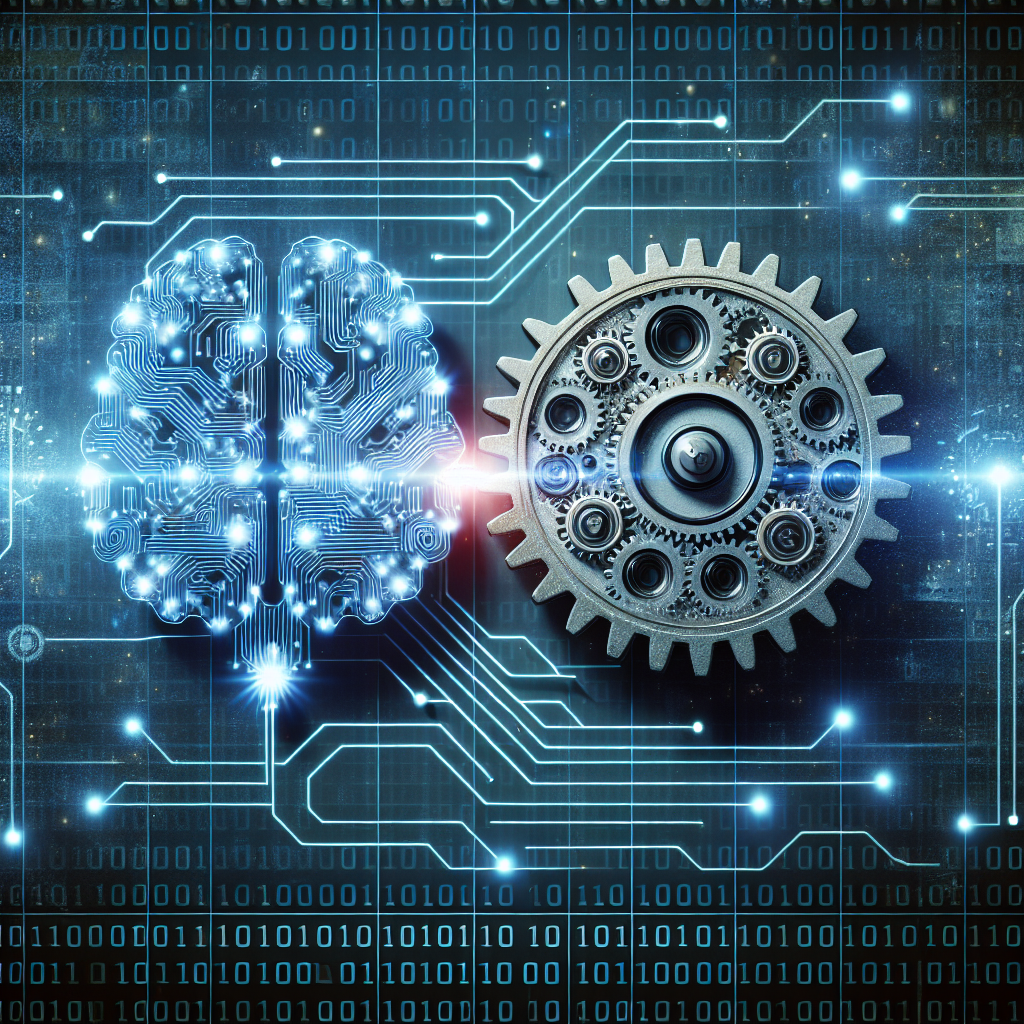Artificial Intelligence (AI) has become a buzzword in the tech industry in recent years, with many companies investing heavily in AI technologies to improve their products and services. One of the key areas where AI is making a significant impact is in Machine Learning. Machine Learning is a subset of AI that focuses on developing algorithms that allow computers to learn from and make predictions or decisions based on data.
In this article, we will explore the role of AI in Machine Learning, its applications, and how it is shaping the future of technology.
AI in Machine Learning
AI plays a crucial role in Machine Learning by providing the tools and algorithms needed to analyze and interpret data. Machine Learning algorithms are designed to learn from data, identify patterns, and make predictions or decisions based on that data. AI technologies such as neural networks, deep learning, and natural language processing are essential components of Machine Learning systems.
Neural networks are a type of AI algorithm inspired by the way the human brain works. They consist of layers of interconnected nodes that process information and make decisions based on that information. Deep learning is a subset of neural networks that uses multiple layers of nodes to learn complex patterns and make more accurate predictions.
Natural language processing (NLP) is another AI technology that is used in Machine Learning to analyze and interpret human language. NLP algorithms can understand and generate human language, enabling machines to interact with humans more effectively.
Applications of AI in Machine Learning
AI technologies are being used in a wide range of industries to improve efficiency, accuracy, and decision-making. Some of the key applications of AI in Machine Learning include:
1. Healthcare: AI is being used in healthcare to analyze medical images, diagnose diseases, and personalize treatment plans. Machine Learning algorithms can process large amounts of medical data to identify patterns and make predictions about patient outcomes.
2. Finance: AI is being used in the finance industry to detect fraud, predict market trends, and automate trading processes. Machine Learning algorithms can analyze financial data in real-time to make faster and more accurate decisions.
3. Marketing: AI is being used in marketing to analyze customer behavior, predict buying patterns, and personalize marketing campaigns. Machine Learning algorithms can segment customers based on their preferences and target them with relevant offers.
4. Transportation: AI is being used in transportation to optimize routes, improve traffic flow, and enhance safety. Machine Learning algorithms can analyze traffic data to predict congestion and suggest alternative routes.
5. Manufacturing: AI is being used in manufacturing to automate processes, optimize production schedules, and improve quality control. Machine Learning algorithms can analyze production data to identify inefficiencies and make real-time adjustments.
The Future of AI in Machine Learning
The future of AI in Machine Learning is bright, with new technologies and applications emerging every day. As AI continues to evolve, we can expect to see even more advanced Machine Learning algorithms that can learn from less data, make more accurate predictions, and adapt to changing environments.
One of the key challenges facing AI in Machine Learning is bias in data. Machine Learning algorithms are only as good as the data they are trained on, and if that data is biased, the algorithms will produce biased results. To address this challenge, researchers are developing new techniques to detect and mitigate bias in data, such as algorithmic fairness and transparency.
Another challenge facing AI in Machine Learning is interpretability. Machine Learning algorithms are often seen as “black boxes” that make decisions without explanation. To address this challenge, researchers are developing new techniques to explain how Machine Learning algorithms arrive at their decisions, such as interpretable AI models and explainable AI.
FAQs
1. What is the difference between AI and Machine Learning?
AI is a broad field of computer science that focuses on creating machines that can perform tasks that typically require human intelligence, such as recognizing speech, playing games, or making decisions. Machine Learning is a subset of AI that focuses on developing algorithms that allow computers to learn from data and make predictions or decisions based on that data.
2. How does AI help in Machine Learning?
AI technologies such as neural networks, deep learning, and natural language processing are essential components of Machine Learning systems. These technologies provide the tools and algorithms needed to analyze and interpret data, identify patterns, and make predictions or decisions based on that data.
3. What are some real-world applications of AI in Machine Learning?
Some real-world applications of AI in Machine Learning include healthcare (diagnosing diseases, personalized treatment plans), finance (fraud detection, market prediction), marketing (customer behavior analysis, personalized campaigns), transportation (route optimization, traffic prediction), and manufacturing (process automation, quality control).
4. What are the key challenges facing AI in Machine Learning?
Some key challenges facing AI in Machine Learning include bias in data, interpretability of algorithms, and scalability of models. Researchers are actively working to address these challenges and develop new techniques to improve the performance and reliability of Machine Learning systems.
In conclusion, AI plays a crucial role in Machine Learning by providing the tools and algorithms needed to analyze and interpret data, make predictions or decisions, and improve the efficiency and accuracy of systems. With new technologies and applications emerging every day, the future of AI in Machine Learning looks promising, with the potential to revolutionize industries and improve the way we live and work.

